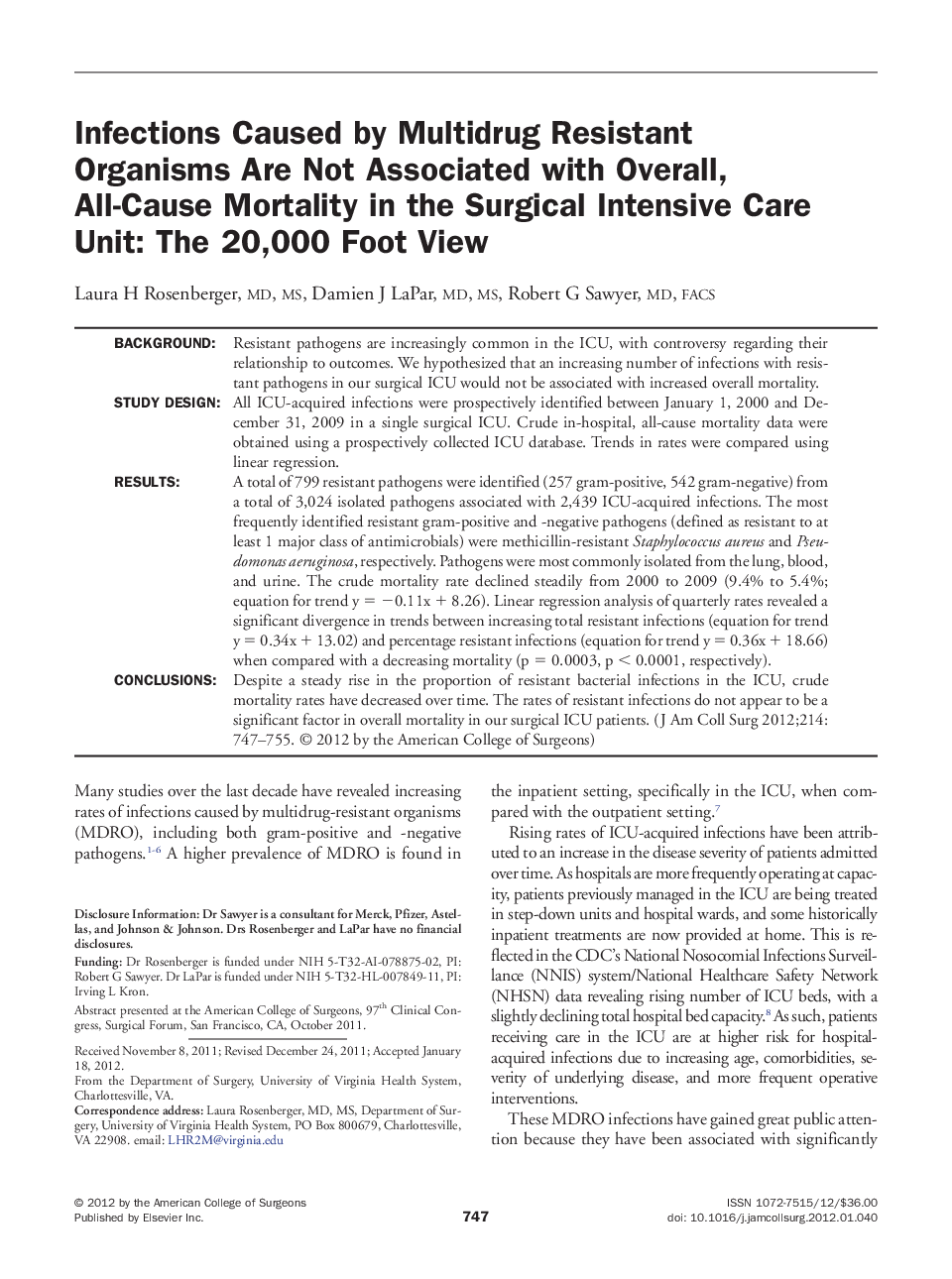| Article ID | Journal | Published Year | Pages | File Type |
|---|---|---|---|---|
| 4293501 | Journal of the American College of Surgeons | 2012 | 9 Pages |
BackgroundResistant pathogens are increasingly common in the ICU, with controversy regarding their relationship to outcomes. We hypothesized that an increasing number of infections with resistant pathogens in our surgical ICU would not be associated with increased overall mortality.Study DesignAll ICU-acquired infections were prospectively identified between January 1, 2000 and December 31, 2009 in a single surgical ICU. Crude in-hospital, all-cause mortality data were obtained using a prospectively collected ICU database. Trends in rates were compared using linear regression.ResultsA total of 799 resistant pathogens were identified (257 gram-positive, 542 gram-negative) from a total of 3,024 isolated pathogens associated with 2,439 ICU-acquired infections. The most frequently identified resistant gram-positive and -negative pathogens (defined as resistant to at least 1 major class of antimicrobials) were methicillin-resistant Staphylococcus aureus and Pseudomonas aeruginosa, respectively. Pathogens were most commonly isolated from the lung, blood, and urine. The crude mortality rate declined steadily from 2000 to 2009 (9.4% to 5.4%; equation for trend y = −0.11x + 8.26). Linear regression analysis of quarterly rates revealed a significant divergence in trends between increasing total resistant infections (equation for trend y = 0.34x + 13.02) and percentage resistant infections (equation for trend y = 0.36x + 18.66) when compared with a decreasing mortality (p = 0.0003, p < 0.0001, respectively).ConclusionsDespite a steady rise in the proportion of resistant bacterial infections in the ICU, crude mortality rates have decreased over time. The rates of resistant infections do not appear to be a significant factor in overall mortality in our surgical ICU patients.
